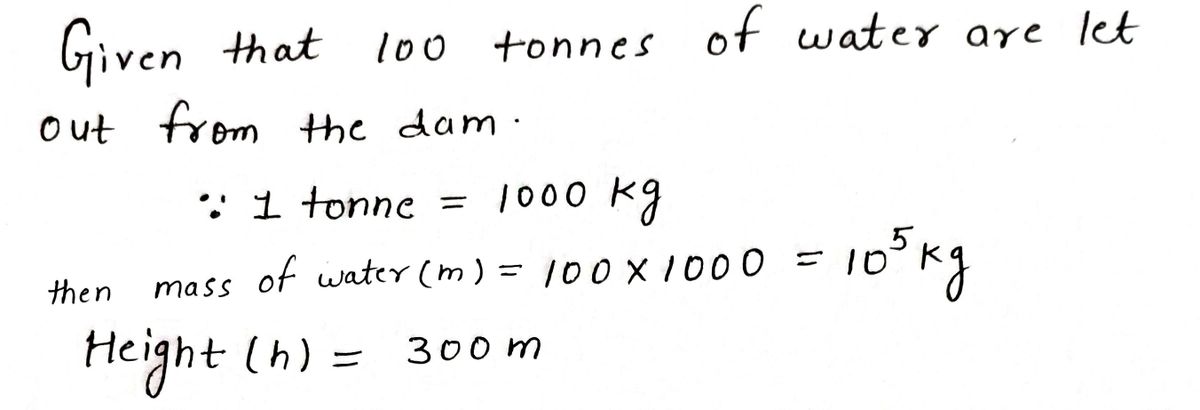A dam collects water at a height of 300 m. The water can be let down through a pipe. As it falls to the ground it loses potential energy but it gains kinetic energy. 100 tonnes of water are let out from the dam and reach the ground, 300m below; all the gained kinetic energy is then harnessed by a perfectly efficient turbine and converted into energy to power houses in the valley. The Bureau of Statistics tells us that an average household consumes approximately 500 MJ of energy per week (note: M stands for Mega = million, so MJ is one million Joules). (a) How many houses can be powered by the falling water for an hour?
A dam collects water at a height of 300 m. The water can be let down through a pipe. As it falls to the ground it loses potential energy but it gains kinetic energy. 100 tonnes of water are let out from the dam and reach the ground, 300m below; all the gained kinetic energy is then harnessed by a perfectly efficient turbine and converted into energy to power houses in the valley. The Bureau of Statistics tells us that an average household consumes approximately 500 MJ of energy per week (note: M stands for Mega = million, so MJ is one million Joules).
(a) How many houses can be powered by the falling water for an hour?
(b) If the same amount of water came down at a slow rate of 1 kg/h what would be the power output of
the dam?

Step by step
Solved in 3 steps with 3 images









